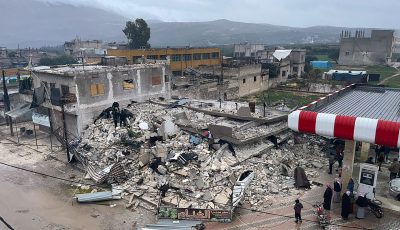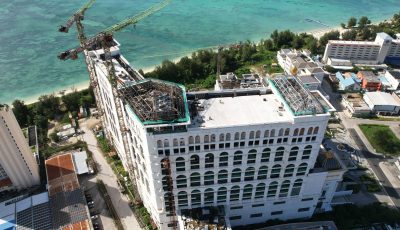Time on Tinian
Please allow me a few lines to congratulate Mayor JP San Nicolas on the very professional manner in which he managed the recent congressional delegation visit to Tinian. The mayor engaged each member of the delegation personally at some time during the tour and made the issue of Tinian’s military development memorable for each.
As our “borrowed” PSS bus turned north out of the Tinian commuter terminal and onto Broadway, the mayor stepped into the aisle at the front of the bus between chairman Bishop (R-Utah and one of the most powerful people in D.C.) and Guam Delegate Madeleine Bordallo, who has spent the last several years on the Armed Services Committee working out the details on the transfer of U.S. Marines from Okinawa to Guam. Because training is essential to Marine Corps operations, she has also been focused on the strategic importance of developing facilities on Tinian and Pagan. As with Kilili, Madeleine has been working with DoD to ensure that local issues and concerns are taken into consideration during the planning process. Congressman Kilili strategically took the seat behind Madeleine, creating an active dialogue between two Marianas delegates and the chairman of the Committee of Natural Resources.
As Kilili has alluded, Mayor JP made an impassioned statement, expressing that the people of Tinian are very patriotic and are not anti-American. Speaking loudly enough for the people in the back of the bus, the mayor said the people understand the need for national security in the Western Pacific, but that the proposed heavy artillery range on Tinian would destroy some of the island’s most treasured historical artifacts and create a dudded impact area. That conflicts with the Covenant and the CNMI Constitution, which guarantees the people’s right to a quality environment. The bus became rather quiet for a few minutes, dodging potholes in the 70-year-old road, then slowly driving past the 1938 Japanese Hinode Shrine and the 1945 American Memorial Shrine before turning onto Old Boston Post Road for the ride down to North Field.
Congresswoman Bordallo asked about the roads. I informed the delegation that an amendment to the Technical Agreement to the Covenant had transferred the roads on the Military Leaseback Area back to the CNMI, but that the roads on the Exclusive Military Use Area remained with the federal government. And the Municipality of Tinian receives no maintenance funds from either the CNMI or the U.S.
I think both the mayor and I were shocked when Congresswoman Bordallo brought up the subject of the Civilian-Military Advisor Council, asking if it was meeting to resolve the issue. (This advisory council had been created within the original Technical Agreement to resolve local community issues that might arise as the military development proceeded.)
After a brief glance at the mayor, I advised Congresswoman Bordallo that the mayor had written to the governor some time ago, requesting that the council be initiated to discuss such issues as road maintenance, solid and liquid waste disposal, water and power utilities—all of which must be joint operations.
As we turned into North Field, one of the delegation asked me how much Tinian was being paid for use of the land today. I answered, “Nothing.” Except what they contract out, such as the fence around the Chiget Mortar Range. All lease fees were paid up front as per the Technical Agreement in 1975 dollars. Regarding future training, if the Marines fly in from Guam on Monday mornings and bivouac on leased lands, then fly out on Friday afternoon to save money for DoD, then there will be little private economic development on Tinian. There will be an initial windfall of business during base construction, but after that, not much.
Looking at Madeleine and Kilili directly, I stated that the real income from the Marine Corps’ move to Guam will be what is known as Section 30 money—federal income taxes from military personnel permanently stationed in Guam that will be remitted to the government of Guam for operations annually. Because they will all be based in Guam, none of those funds will come to Tinian or the CNMI. Mayor JP then suggested that perhaps a few of these transfers from Okinawa, perhaps one operational unit, could be based on Tinian. It would mean not only regular revenues for operations on Tinian, but also an opportunity for the people of Tinian to become accustomed to the permanent presence of U.S. military personnel, as Guam has had since the Spanish-American War of 1898. Bordallo glanced at Kilili, then said something to the effect of whatever it takes, let’s get this job done.
We got back to the airport late. The codel plane was already warmed up. There wasn’t much time for goodbyes. But there were handshakes and meaningful exchanges before the delegation boarded their aircraft. I have no doubt that when the supplemental CJMT is issued, they will remember their time on Tinian and consider what they saw and heard on a three-hour tour of Tinian’s leased lands.
Don Farrell
Marpo Heights, Tinian



























